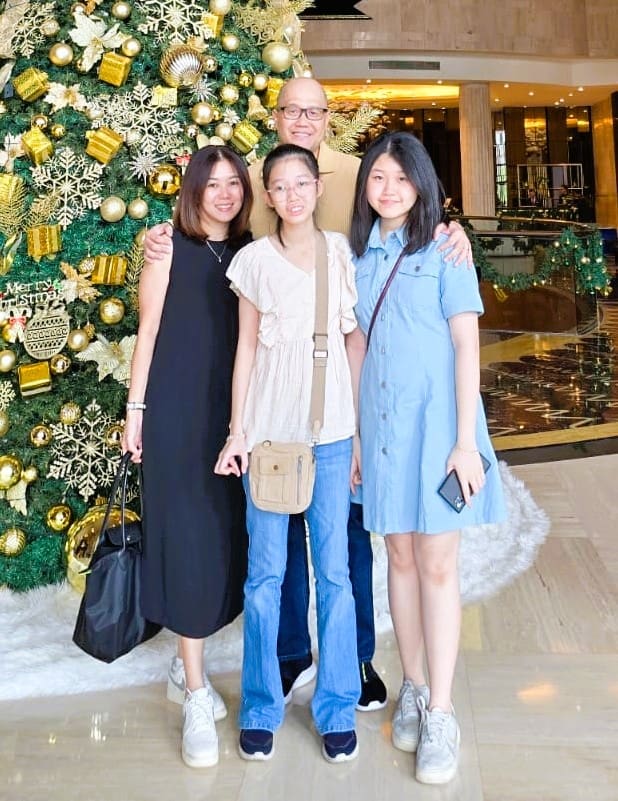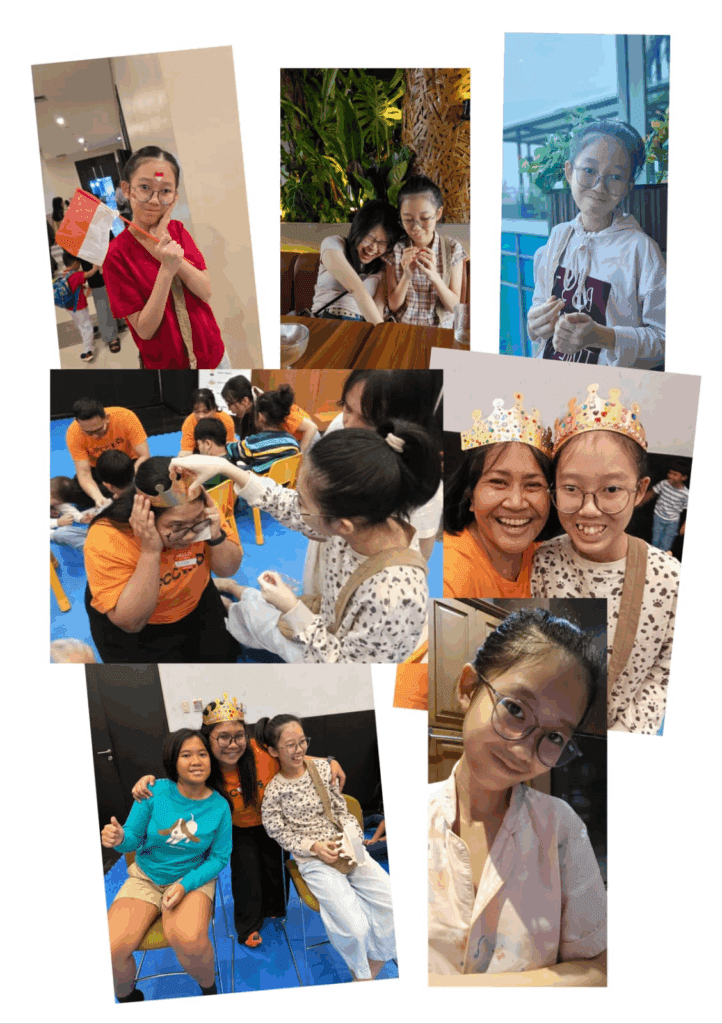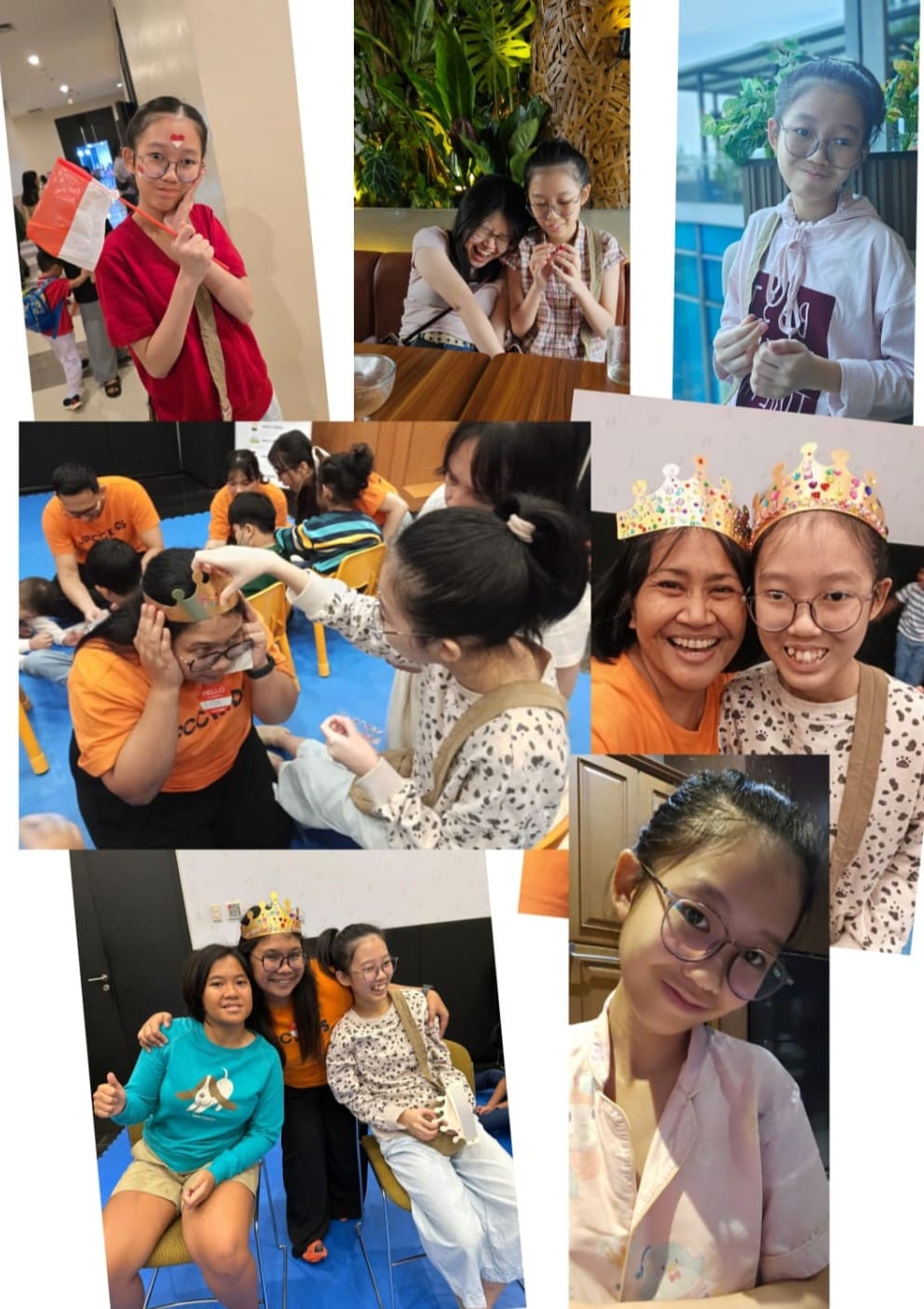Raising a child with unique needs brings both challenges and unexpected blessings. The journey calls for patience, faith, and a willingness to celebrate progress in every form—no matter how small. For Chloey’s family, walking alongside her has been just that. It has been a refining process of love, steady learning, and leaning on God’s strength in uncertain times.
Over the years, they learned that growth rarely follows the timeline they expected. Yet it unfolded beautifully when nurtured with consistency, prayer, and the right support systems. This is a glimpse into Chloey’s story—her background, her therapeutic journey, and the lifestyle choices that shaped her development.
Growth rarely follows the timeline we expect. Yet it unfolds beautifully when nurtured with consistency, prayer, and the right support systems.
✨ Background
At the time of this writing, Chloey is 16 years old. While her chronological age places her in her mid-teens, her cognitive development is closer to that of a 4- or 5-year-old. She is on the spectrum but is non-violent, understands boundaries, and responds well to discipline. Her family supports her with a gluten-free, low-sugar, minimally processed diet, which has been important for her overall regulation and wellbeing.
🎢 Therapeutic Journey (SIT)
Growing up in Jakarta, Indonesia, Chloey received Sensory Integration Therapy (SIT) at different points in her childhood. SIT helps children on the spectrum process sensory input more effectively, often through play-based movement activities that build cognitive, motor, and social skills. Examples include swings, slides, climbing equipment, balance beams, and ball activities—structured play that strengthens sensory and motor pathways.
⏳ Experiences Over Time
Chloey’s journey shows how both therapy and diet shaped her progress:
- With Mr. Prakash (ages 5–9): Sessions were one-on-one, focused, and individualized, but this approach did not work well for Chloey. At this stage, she had no dietary restrictions.
- With Pak Wahyu (ages 9–10): Sessions were conducted in a group setting with multiple children and therapists in one large room. Activities shifted between group and individual work. By this time, Chloey was following dietary restrictions (gluten-free, sugar-free, avoiding processed foods). Despite the language barrier—Chloey did not speak Indonesian and the therapists did not speak English—the connection worked, and progress was seen.
- After age 10: Therapy was interrupted by COVID-19 and has not resumed since.
🏡 Family and Environment
Beyond therapy, the environment in Jakarta also shaped Chloey’s journey. Conventional medical options were limited—and in hindsight, this became a blessing. She was never placed on drugs or medications. With fewer therapy choices, her family leaned on prayer, wisdom, and steady learning. At home, her family combined a nourishing diet with wise discipline—teaching obedience, respect for authority, and clear boundaries.
This was not always easy. When Chloey had intense tantrums—rolling on the floor, crying, shouting, or even hurting herself out of frustration when she could not express her needs—her parents stayed the course. They protected her safety, upheld consistent boundaries, and refused to give in, even in the midst of emotional storms. At times, discipline included physical correction (spanking), but always within a framework of love, consistency, and guidance.
Over the years, this steady, prayerful approach not only shaped Chloey’s progress and wellbeing, but also deepened her parents’ wisdom and patience. Praise God, they made intentional choices that laid the cornerstone for her healing and stability.
This shows that outcomes are influenced not only by the SIT method itself, but also by therapist skill, delivery style, and the child’s receptivity. Just as important, Chloey’s experience demonstrates how diet and wise parenting together laid the foundation—calming her brain and nervous system so she could respond more effectively to therapy.

Chloey beaming with joy during a family outing—
reminders of progress worth celebrating.
Her parents leaned on prayer, wisdom, and steady learning—laying the cornerstone for her healing and stability.
🧱 The Importance of Building a Foundation
Think of it like constructing a building: if the base is weak, the upper structure cannot stand firmly. In autism care, the foundation often begins with dietary changes that calm the brain and nervous system. This creates the conditions for therapy to take root. As resources like Nourishing Hope explain, removing inflammatory foods—such as gluten, excess sugar, and processed foods—allows the body to heal and regulate.
Diet and wise parenting together calmed her brain and nervous system, creating the foundation for therapy to take root.
The foundation also includes tactile sensory activities and floortime. These hands-on, interactive practices help the child connect with their body and with others. Simple activities like building with blocks, playing with textured materials, swinging, or rolling on the floor create opportunities to explore, regulate, and practice back-and-forth interaction. This kind of play builds two-way communication and connection. By contrast, passive activities such as watching TV or spending hours on gadgets cannot provide the same benefits. Limiting screen time and replacing it with sensory play and face-to-face interaction brings richer stimulation for both brain and social development.
Progress may feel slow at first as the child’s system stabilizes. But once the nervous system is calmer and the foundation is in place, therapy can build upon it more effectively—helping the child engage, focus, and develop higher-level skills.
🌱 Daily Life and Growth
Today, Chloey no longer attends school but has a weekly tutoring session where she learns practical skills: basic math for daily life, English vocabulary, simple conversation, and reading. At home, her family involves her in daily routines and household activities—from cleaning up and helping with meal preparation to caring for herself through showering, changing clothes, brushing hair, and trimming nails.
She is still prone to daydreaming and sometimes shows stimming (repetitive self-soothing behaviors). However, tantrums are now less frequent and much less intense. Step by step, she is gaining life skills and learning to manage herself with greater calm. Her parents trust that everything remains a work in progress and hold onto hope that, by God’s grace, she will one day achieve independence in her own version. 🙏🏻
Her mother reflects that in the early years, she often felt her life would be defined only by caregiving. Yet as Chloey has grown and found more stability, her mother has also been able to flourish. Today she goes to the gym, enjoys her morning walks, and works as a pastry chef from home. And God willing, her next adventure will be a trip to Japan with close friends. 🥰

Chloey (middle) with mom (left), sister (right), and dad (back)
Step by step, Chloey is gaining life skills and learning to manage herself with greater calm.
💡 Lessons from the Journey
- Sensory Integration Therapy can be helpful, but its impact depends on how it is delivered and received.
- The bond between therapist and child often makes more difference than the method itself.
- A nourishing diet and wise discipline create the foundation—calming the nervous system and shaping character so growth can take root.
- Engaged play and sensory activities build connection in ways that screens never can.
- Simple daily routines and life skills are just as valuable as formal therapies, guiding steady steps toward independence.
- Some behaviors may remain, but with patience and guidance, they become more manageable over time.
- Progress is not always fast or linear, but consistency, prayer, and hope open the way for growth.
- Parenting is also a journey—each step brings new wisdom, deeper resilience, and unexpected grace.
✍️ Ruth’s Reflection
As Chloey’s aunt, I’ve had the privilege of witnessing her journey unfold up close. It’s been a humbling reminder that progress takes many forms—often slower than we expect, yet always filled with meaning. I’ve seen how patience, prayer, and steadfast love have carried her family through challenges, and how God’s grace has met them at every step.
Chloey’s life continues to bless those around her with quiet lessons in resilience, joy, and hope. To me, she is more than a beloved niece; she is a gentle teacher—reminding me that love, led by grace, is where real growth begins.
🌟Chloey’s joyful moments with her church friends—learning, playing, and sharing laughter🌟


keep browsing
I help women reconnect with their bodies and create lasting wellness with personalized nutrition, functional health, and energy practices—so your body can thrive. Feeling wired yet tired, struggling with fatigue, sleep disruptions, digestive issues, or hormonal imbalances? You’re in the right place.
Meet your coach, Ruth!
You Might Also Like...

Chloey’s story is one of patience, prayer, and steady progress. Through diet, therapy, and faith-filled parenting, her family discovered that growth may be slow, but it blossoms when nurtured with love, wisdom, and consistency—offering hope for every step of the journey.

Vitamin D is more than sunshine or supplements. Behind the numbers, your body manages savings and spending accounts, cofactors like magnesium and vitamin A, and patterns that labs help reveal. Seeing the full system makes it easier to choose wisely and stay balanced.

Explore how the Gage R&R concept—practiced in engineering—offers a helpful lens for understanding variability in functional health lab testing. Lab results aren’t always clear-cut; deeper insight comes from considering timing, environment, and your body’s real-life context—not just numbers on a report.
How Can I Support You?
Ruth helps women reclaim clarity, confidence, and vitality through a whole-person approach to healing. She integrates lab insights, energy medicine, and personalized wellness strategies to support each client’s unique path to balance and resilience. While she doesn’t diagnose or treat conditions, she helps uncover lifestyle and environmental factors affecting well-being—and equips women with lasting tools to rebuild their health and confidently support those they love.